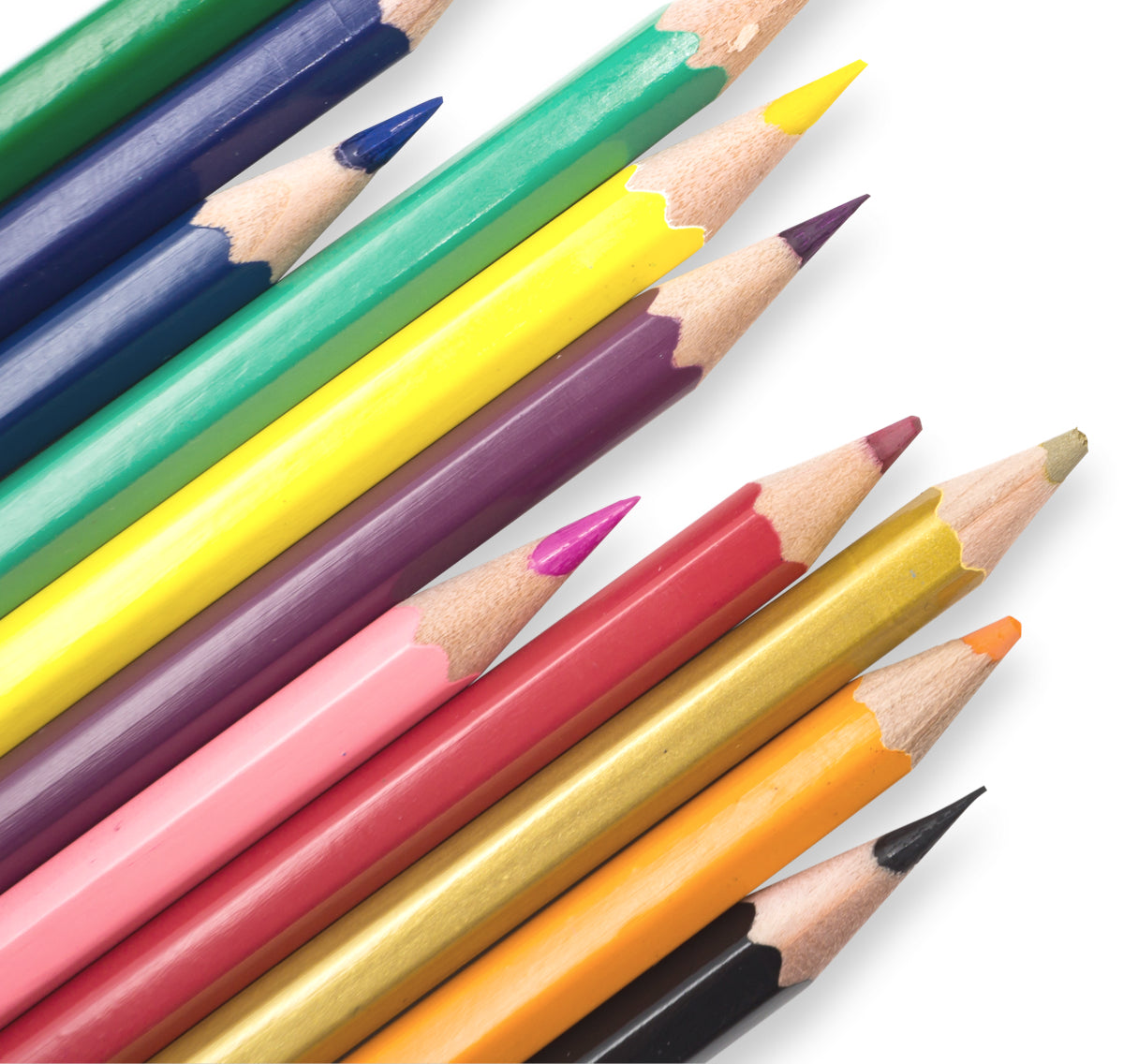
This week, I wanted to share with you some of the methods I used to teach the alphabet with my transitional kindergarten (TK) class this fall. 17 out of 22 of them learned ALL of the letters and sounds in less than 11 weeks, and that's pretty amazing when you consider that they were ALL four years old when school started in August! All of the children in TK have fall birthdays, turning five sometime between September 1 to December 2.
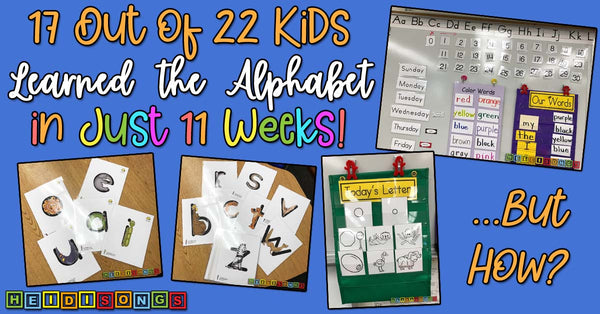
To clarify, a few of those 17 kids missed one letter. Most of those were reversals, especially b's confused for d's, and lowercase u's confused with n's. These kids also learned the letter sounds, with most of them getting all of them correct. 17 children got either 25 or 26 letter sounds correct!
The five remaining children still learned quite a bit, despite the fact that two of them have special needs! Their alphabet naming scores are 33, 20, 6, 5, and 3. And their letter sound scores are 24, 22, 18, 20, and 13!
You may be surprised to see that the children are stronger on the letter sounds than the letter names, but this is ALWAYS the case in my classroom, because I use Zoo Phonics and I focus on the letter sounds FIRST. We work on the sounds first, and then move to the letter names. The sounds are easy to learn with Zoo Phonics, and by using the sounds that they know, you can teach them the letter names. This is a technique that has worked for me very well since I started doing it when teaching Kindergarten in 1993!
Let me start by explaining that I am not an affiliate of Zoo Phonics, so I don't get a single thing from them for promoting their products. I am simply telling you about it because it WORKS. It works FAST, and it works EVERY. SINGLE. YEAR. The reason that it works is because it is multi-sensory: there is a character on each letter and a motion for each one that relates to the character. It makes it easy to remember the sounds! Later we practice with that with plain letter cards and start saying the letter names right after we say the sounds. This, in addition to singing the alphabet and the spelling words right after each sight word song is the secret sauce that makes the letters stick in their heads.
But let me tell you the specifics of my weekly routine for teaching the alphabet! It's not difficult and it's really not all that time consuming!
Daily Routines to Help Teach the Alphabet
Sing the Alphabet Song EVERY DAY While Pointing at the Letters

We use the Michael Heggerty Phonemic Awareness Program, and one of the routines that they have is that we sing the ABC Song every day while pointing to the letters. I have found that this is a very valuable thing for the children to do each day, even if it is just me that is doing the pointing! It's super easy to do when using the HeidiSongs Nursery Rhymes video! That has the ABC song on it! But if I do not stop to find that song on my computer, then I just point to the letters on my wall while we sing . I do think it really helps!
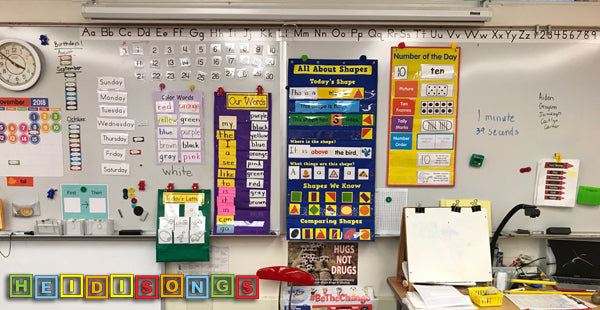
Choose One Letter of the Week to Review for the Focus Wall
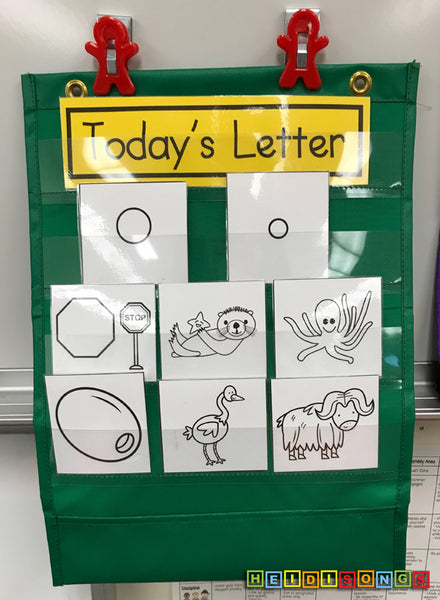
I always have one letter card on my focus wall, and we say it plus its sound each day. I say, "What letter is this? Give me the sound." Then we all will say all of the beginning sound cards below it. For example, "O like octopus, O like olive, O like otter..." etc. I think that this really helps the kids understand what that letter sounds like when it's in a word. The flash cards for this little chart came from our Alphabet Workbooks Volumes One and Two.
First Four Weeks: Daily Drill on Letter Sounds Using Zoo Phonics Cards
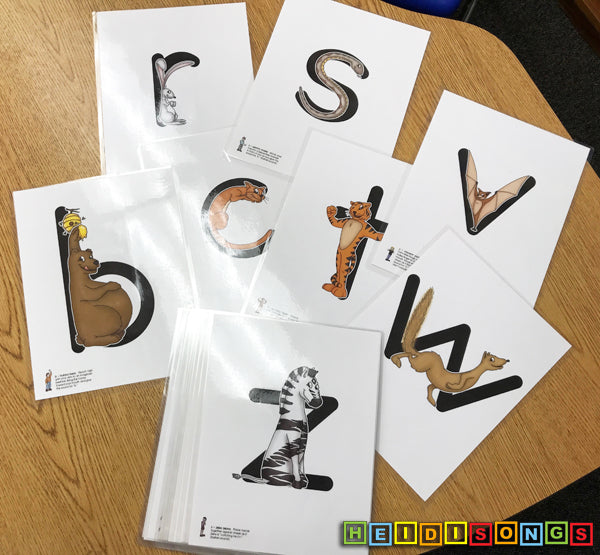
At the beginning of the year, I start off by telling the children a quick little story about each of the characters on the Zoo Phonics cards to help them remember. For example, for the Z, Zeke Zebra is tired of running around the zoo all day, so he rests his head and says, "/z/." I tell them these little stories for the first couple of days, and then after that I just say, "Zeke Zebra says..." and then we all make the motion for the that card and say the /z/ sound.
For the first two weeks or so, I will always say the name of the ZP character, saying something like, "Allie Alligator says..." and then I wait for the kids to respond with the motion and the sound. Once someone starts doing it, I do it with them. I go through the entire deck of cards every day, just like that. Then around week three, I start just saying, "Sound?" and then I wait for the children to give me the motion and the letter sound. Again, once someone starts doing the motion, I join in and do it with them.
Below is a video of the Zoo Phonics motions, just in case you are not familiar. The first video tells the little stories about what each movement represents, and the second is a practice video without the stories. But the one thing that these both lack is flipping the flashcard over and relating the sound to the letter name.
Meanwhile, we sing the Animated Alphabet songs with the video as often as we can! My personal favorites are the songs "Alphabet Action" and "Sounds to Letters" because they review the entire alphabet in just a few minutes!
Send Home a Progress Report with Flashcards After Four or Five Weeks of School
I use ESGI for this purpose! If you are not familiar with ESGI software, you are missing out! Yes, I am an affiliate, but it is such an AMAZING tool that I would recommend it even if I were not. It's sooo easy. All you have to do is ask the children the name or sound of the letter on the screen and click yes if they got it right or no if they got it wrong.

Then let ESGI generate a personalized parent letter explaining what each child needs to work on and the flashcards that each child needs- ONLY for the items they MISSED!)
I know what many of you are probably thinking. "The parents of my students will not work with them, so why bother?" And I have to tell you that for as many times as I have thought that same thing, there always have been a few families that totally surprised me and worked with their child until he/she knew every single one! This happened with a couple of children in my teammate's class this year! (And I just couldn't resist getting in an "I told you so!!!")

I ALWAYS send home the progress report and a tool of some kind about halfway through the trimester, such as flashcards or a fluency chart (see example below), to enable parents to help. If you second guess them and assume that nobody will help, then you're right- nobody will.
Weeks Five - Eight: Daily Drill Saying Letter Sound and Then Letter Name
Once the group seems to know the sounds when I show them the card with the Zoo Phonics character on it, then I flip the card to the back and show them a plain letter and ask them to tell me the letter sound and then the letter name. For every card, I say, "Sound? Name?" We do this for the ENTIRE alphabet, every single day. (Please note that the Zoo Phonics cards do not come with the plain letter on the back. You'll have to print out a large letter yourself and laminate it onto the back or slip it into a page protector to use this technique.)

Here is the trick: it is not so hard to go from the /m/ sound to remembering that the letter name is M. And it's not so hard to remember that the letter with the /b/ sound is called B. MOST of the letters have names that are similar to their sounds! The children figure this out pretty quickly! And means that once they've got the easy ones, all you have to do is work on the trickier ones, such as the G and the J, C, W, Q, and Y.
From Week Five Forward: Start Singing Sight Word Songs, and Spell the Words Together Immediately After the Song Plays
We are supposed to teach 30 sight words this year in Transitional Kindergarten, and that means that they should know ten of them for the November Report Card. So I start with the color words songs and simple words like "the," "like," and "see." After each song plays, I point to the letters and have the kids spell the words aloud with me. I really think that this makes a HUGE difference in their ability to recognize the letters, because they are getting lots of intermittent review of alphabet letters and are seeing them somewhere else besides on the letter cards. It makes the alphabet important to them and necessary, because they LOVE those songs! This is the "Secret Sauce" that solidifies their letter recognition.
Many people ask me in my workshops if this isn't much too early to start teaching sight words, especially when the children really don't know the alphabet. And I totally see their point. The thing is that the songs themselves are actually teaching the kids the alphabet, because the letters are highlighted on the screen as they sing them! And the kids that already know the alphabet are learning the sight words! So this works on so MANY levels.
And here is the kicker: Not only do my students regularly learn the letters in less than 11 weeks, but they also usually learn about ten sight words or more! Out of 30 possible sight words to learn for the year, the average score (the mean) of known sight words right now is 14 words for my 22 students! The mode (most often occurring score) is also 14 words, and the median score is also 14. As for score distribution, my top student knows all 30, and my bottom student knows 0. This is SURELY because my kids LOVE the color word songs!! We play them everyday, and then read the color words and spell them! Many of them also know the following words as well: the, like, is, can, see, go.
Weeks Nine, Ten, & Eleven- Review the VOWELS FIRST, then drill on the rest of the alphabet!
Getting the vowel sounds exactly right is CRUCIAL. Amen???? So I try to make SURE that we all have the sounds down exactly right. And as I was spot checking the kids on ESGI to see how their knowledge of the alphabet was coming along, I noticed that a bunch of them had inaccurate vowel sounds. So this is what I did next.

I pulled out the vowel cards from my stack of Zoo Phonics cards and put them at the top of the stack. I drilled on these FIRST each day. I started reviewing the animal side first, asking for the letter sound and name, and then did the plain letter side, asking for the sound and letter name. Then I did the plain letter side again, asking for the sound again, but trying to get them to say the sounds FASTER. I made it a game to see how fast they could tell me the vowel sounds as I flipped the cards through. Then, I said, "Guess my letter! /u/." The kids would shout out the letter name, and I would do another one."
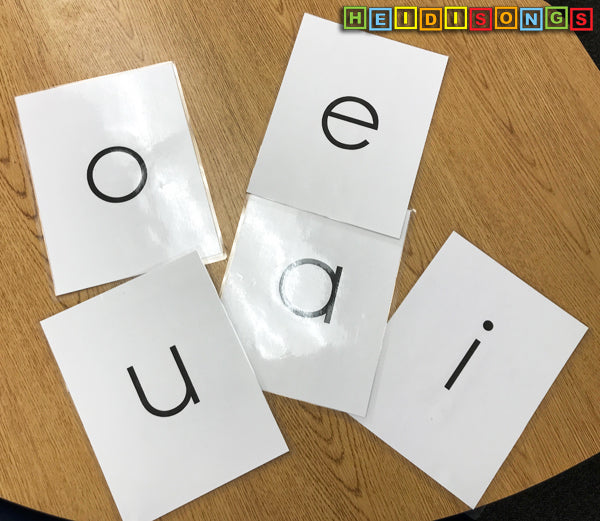
After we did our vowel review, I did the rest of the stack of letter cards as usual, saying, "Sound? Letter?" until all of the cards were gone.
Small Group Routines
You can read more of our small group routines in this post I wrote last June, titled, "How I Got All My Kids to Learn 100% of the Letters and Sounds." In this post, I reflected on what I did in throughout the year in both large and small groups. I hope that this is helpful!
- Heidi :)
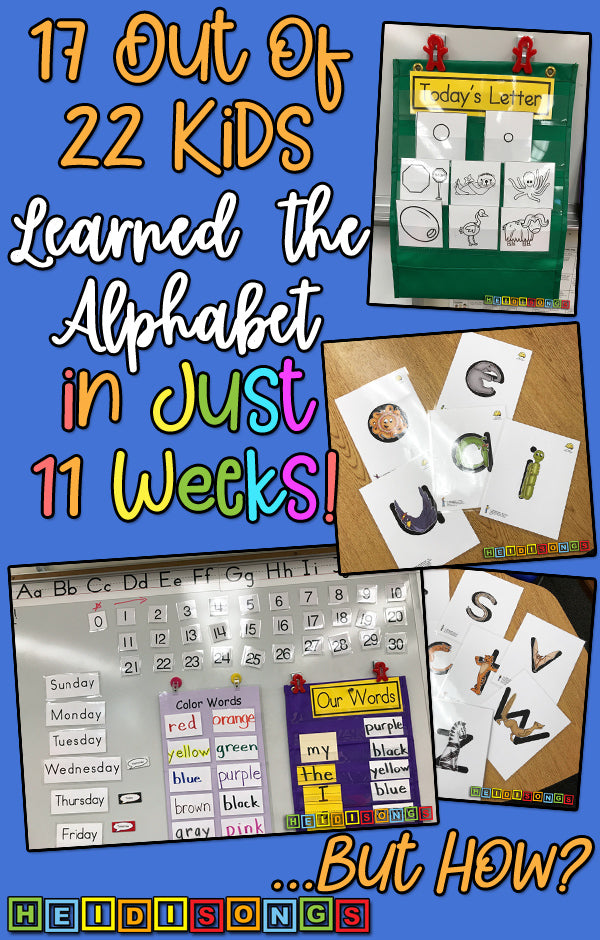
----------------------------------
Follow me! Did you enjoy this post? Do me a favor and share it with your friends! And follow this blog by signing up for my email updates, or follow on Bloglovin', or follow me on TPT! I'm also on Pinterest, Facebook, Twitter, Instagram, Google+ and YouTube, too! Don't forget to sign up for our email newsletter (at the bottom of this page) for special deals and promo codes that you won't find out about anywhere else.



